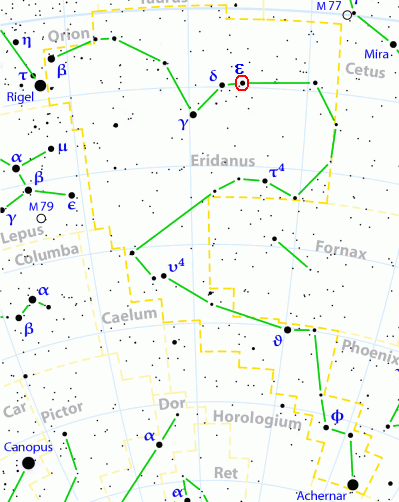Epsilon Eridani
Epsilon Eridani is the third closest star system visible to the naked eye at a distance of 10.5 light years. The star moves with radial velocity 15.5 km/s away from the Earth. Despite its Bayer designation of epsilon, Epsilon Eridani is the tenth brightest star in the constellation of Eridani. The star system is known to science fiction fans as the location of planet Vulcan, the fictional planet of Dr. Spock in Star Trek.
In 2000, the McDonald Observatory Planet Search Program led by Artie Hatzes analyzed 20 years of data of the radial velocity of the star with respect to Earth. The team concluded that the cyclical variations of the star indicated the presence of a gas giant, designated Epsilon Eridani b. Calculations show that this planet is orbiting the star with a period of about 6.9 years, eccentricity of 0.6, mass about 0.86 times that of Jupiter, and a semimajor axis of 3.4 AU (505 million km). Subsequent research has suggested that the star probably has at least one more planet, Epsilon Eridani c. The relatively small proximity of this star makes the system the most suitable candidate for the first exoplanetary probe. There is some debate within the scientific community whether the evidence confirms the existence of the planets, but NASA has decided to send a probe to investigate, just in case.

Evidence for a Long-Period Planet Orbiting Epsilon Eridani
The Astrophysical Journal December 1, 2000